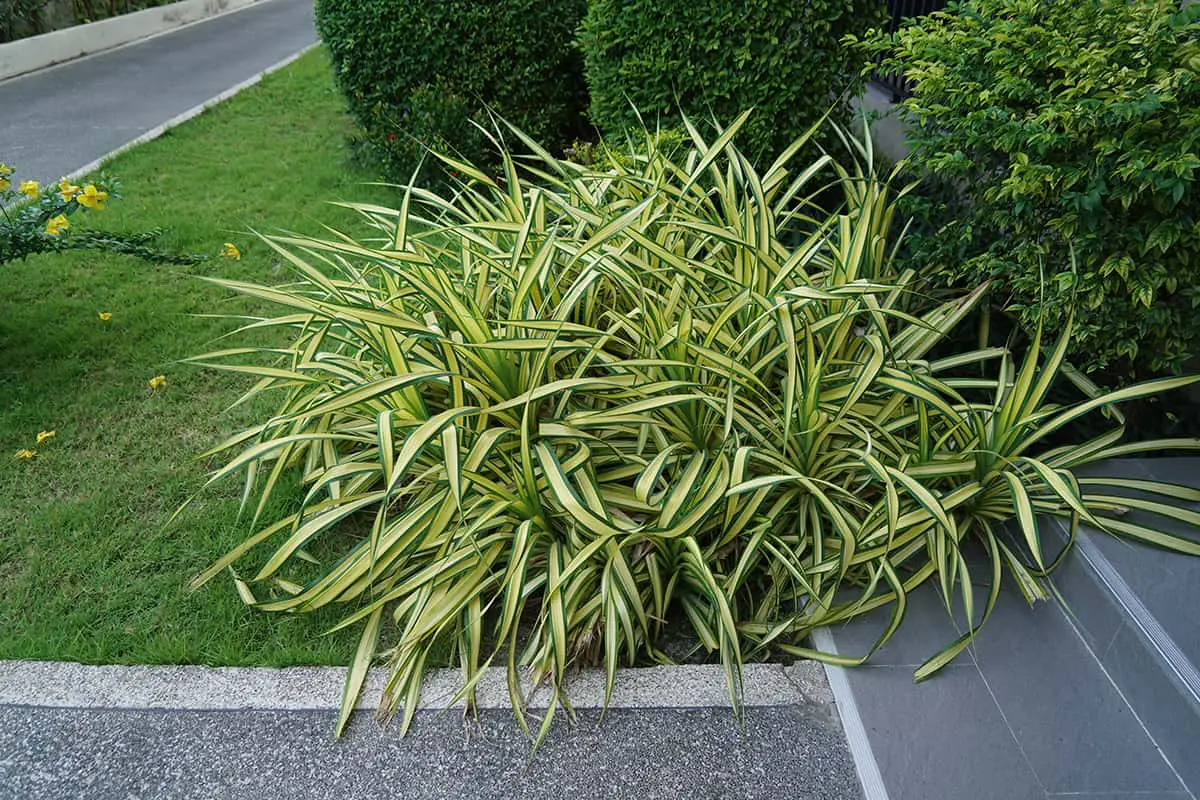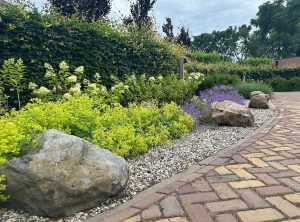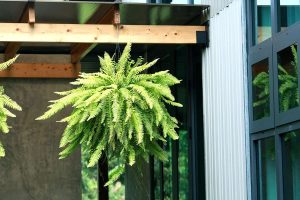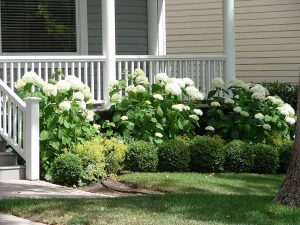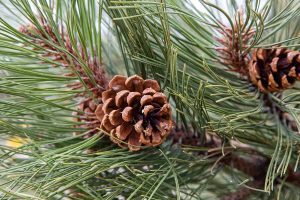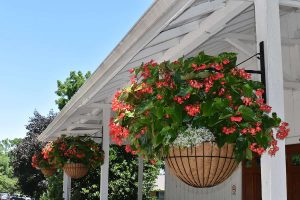If your local climate experiences a lot of rain, or your soil is boggy, then perennials that thrive in full sun and wet conditions will be the mainstay of your garden. Here we investigate the best perennials for wet soil and full sun.
Table of Contents
Goat’s Beard
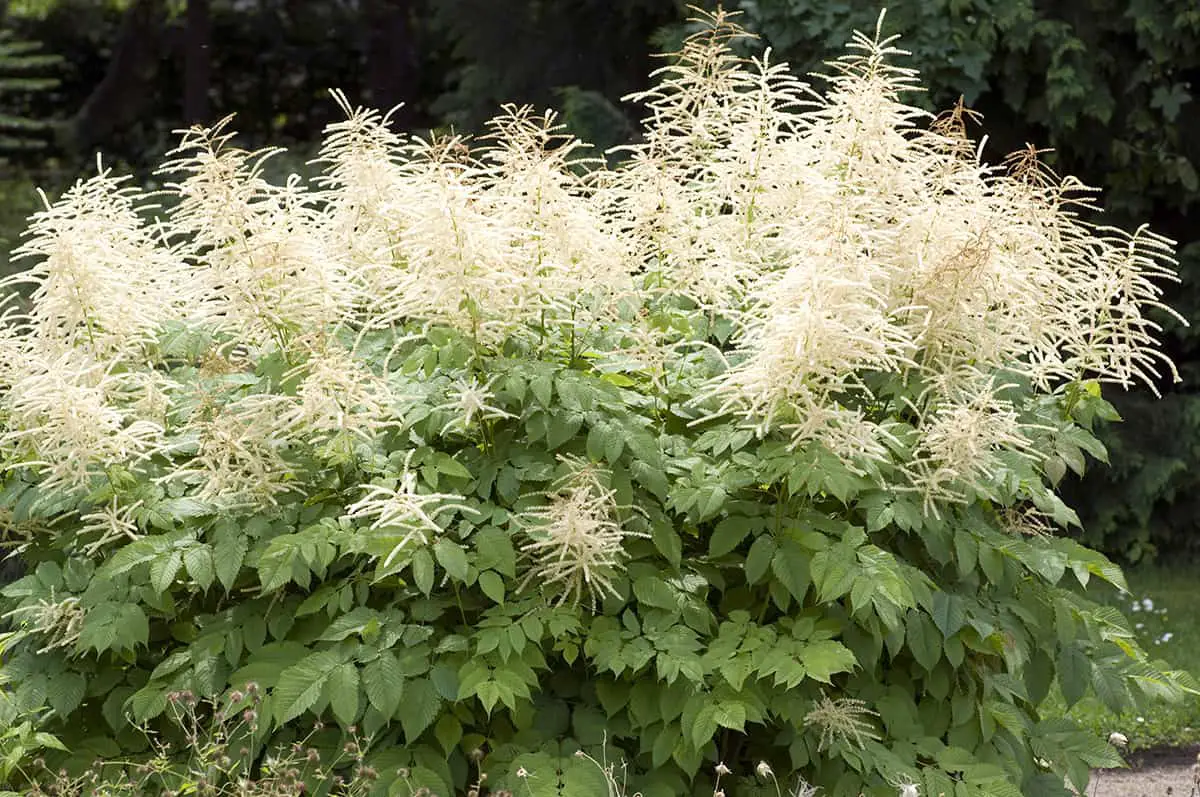
- Botanical name: Aruncus dioicus
- Common names: Goat’s Beard, Bride’s Feather
- Plant family: Rosaceae
- USDA hardiness zone: 3 – 9
- Mature height: 4 to 6 feet
- Mature spread: 2 to 4 feet
This is a flowering perennial plant that is native to Asia, Europe, and North America. It belongs to the rose family, though its flowers do not resemble roses. Instead, the flowers of the Goat’s Beard plant take the form of white, feathery plumes which are held above the green foliage below.
The fluffy blooms are considered more attractive on the male plants since they are more abundant, while the female plant’s flowers are less showy.
The Goat’s Beard flowers in early summer for a few weeks into midsummer, and then the fern-like foliage becomes the star of the show for the remainder of the season. This is an especially popular plant in bog gardens or alongside ponds or streams since it thrives in wet soils and full sun.
Care
Light
This plant should be positioned in a spot that receives full sun. While it can tolerate a little shade, the growth and flowering of the plant will be reduced.
Soil
Goat’s Beard plants should be grown in soil that is fertile, and rich in organic content. In their native habitat, they grow in moist woodlands, alongside riverbanks, so they are accustomed to coping with wet or waterlogged soil. This means that well-draining soil is not essential, and clay soils will be tolerated.
Water
This plant has high water needs, especially when planted in full sun. Goat’s Beard which is growing in partial shade will have lower water demands. Ensure you supply daily water during dry periods, aiming to keep the soil consistently moist to wet.
Temperature
This is a hardy plant that can be grown in USDA hardiness zones 3 to 9. It is sensitive to high levels of heat and does not fare well in extreme temperatures.
The plant will die back to the ground after the first frost, but it will emerge again the following spring. Some gardeners prefer to cut the plant down to ground level after flowering has finished, to reduce the mess of dead foliage in the garden.
Japanese Sedge
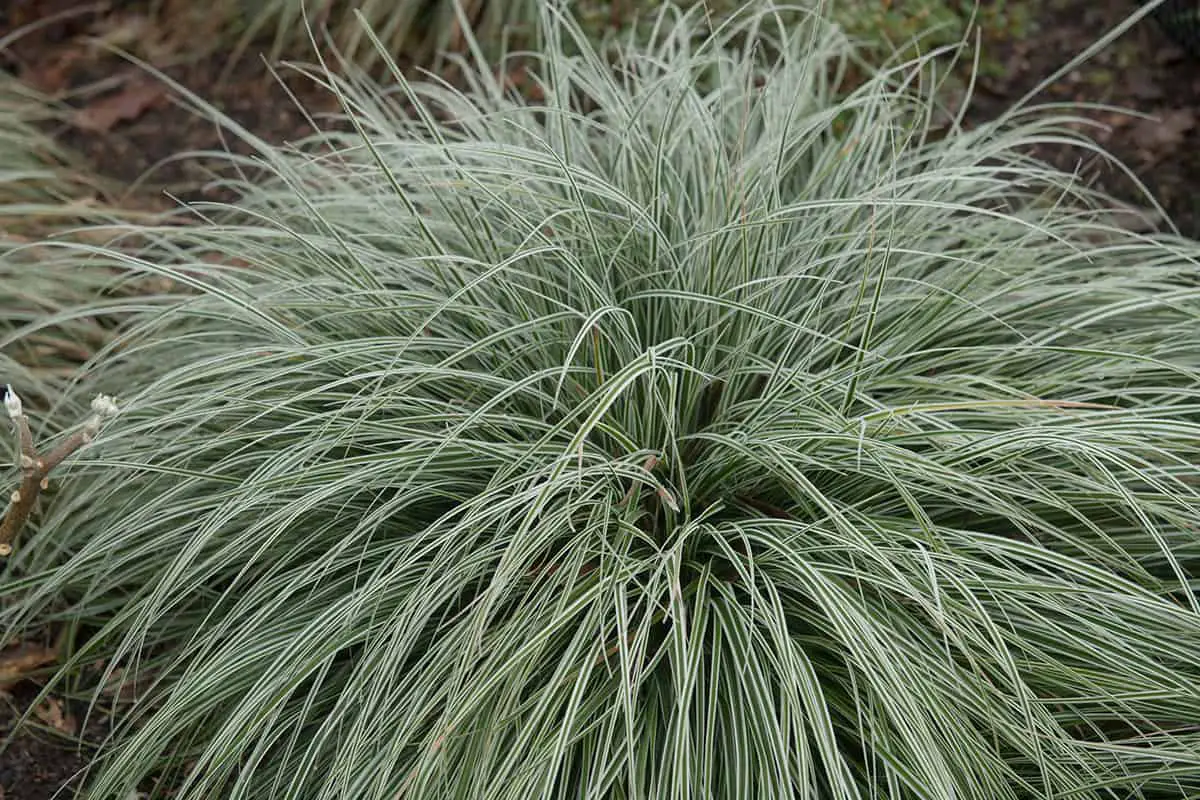
- Botanical name: Carex morrowii
- Common names: Japanese Sedge, Morrow’s Sedge, Japanese Grass Sedge
- Plant family: Cyperaceae
- USDA hardiness zone: 5 – 9
- Mature height: 1 to 2 feet
- Mature spread: 1 to 2 feet
Japanese Sedge is a semi-evergreen perennial grass that is ideal for use as ground cover, but it also works well as a bedding plant or in containers and hanging baskets. This type of sedge produces long and slender blades of grass which are usually variegated in different shades of green.
‘Eversheen’ has yellow-green leaves with dark green margins, and ‘Everest’ has sage green leaves with creamy white margins. Japanese Sedge has a mounding habit and will grow in dense clumps amongst other plants to provide interesting color and texture.
Care
Light
Japanese Sedge thrives in full sun or partial shade. Full sun will be best in cooler climates, while partial shade is a better choice in warmer climates. If the color of the foliage begins to fade in full sun, offer the plant some light afternoon shade.
Soil
The soil a Japanese Sedge plant grows in should be fertile and well-draining. It is not fussy about sandy, loamy, or clay soils, providing that the soil drains well. The plant has high water needs however it cannot tolerate wet soils, so the ability to drain well is essential to avoid root rot.
Water
Japanese Sedge is a thirsty plant that needs to be grown in consistently moist soil. Avoid letting the soil dry out, though allowing the top inch of soil to dry in between waterings can be helpful to prevent the roots from being too wet.
In hot and dry climates you should water the plant every other day, especially when grown in full sun. In cooler climates or partial shade, watering once a week during the dry season will be adequate.
Temperature
This is a reasonably hardy plant that thrives in moderate climates. It is not tolerant of extremely cold temperatures, or extremely hot temperatures. Grow it in USDA hardiness zones 5 to 9.
Mountain Fleece
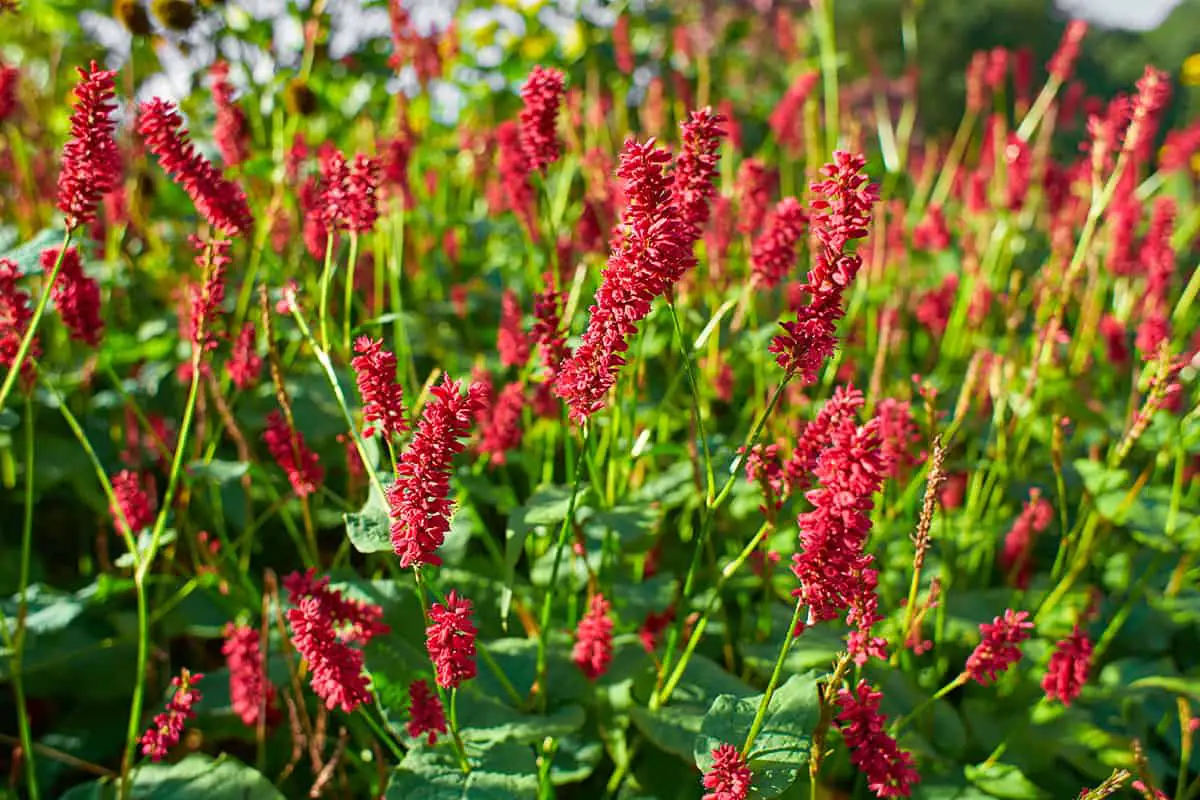
- Botanical name: Bistorta amplexicaulis
- Common names: Mountain Fleece, Red Bistort, Persicaria, Knotweed
- Plant family: Polygonaceae
- USDA hardiness zone: 4 – 9
- Mature height: 3 to 4 feet
- Mature spread: 3 to 4 feet
This is a Chinese native plant that grows across the Himalayan mountain range, where it is accustomed to damp conditions and high levels of light. It was previously known as Persicaria amplexicaulis, but has been reclassified as Bistorta amplexicaulis.
The Mountain Fleece is a perennial, with pointed, heart-shaped leaves, and bottle-brush-style flowers. The flowers bloom for an exceptionally long time, from spring right through to fall.
They arrive atop tall spikes, and come in a number of different colors depending on the variety of the plant. ‘Rosea’ produces pink-lilac colored feathery flowers, ‘Firetail’ flowers are a bright coral-red, and ‘Alba’s is of course responsible for producing white flowers.
Care
Light
Mountain Fleece performs best in full sun when its flowers will bloom most prolifically and in more intense colors. Light shade can be tolerated, especially in hotter climates, however, you can expect the plant’s flowering capacity to be reduced when not in full sun.
Soil
Mountain Fleece prefers soil that is fertile and well-draining, but it will also grow well in average soils. Clay soils and loam soils are suitable, though sandy soils are best avoided.
Water
This plant has high water needs and should be grown in consistently moist conditions. It is ideal for growing alongside a pond or stream where the water will naturally have a more moist quality, but it also works well in borders and containers if you add generous supplemental water when rain is not predicted. This plant grows natively in wet climates, so these conditions should be replicated in the home garden.
Temperature
This is a very hardy plant, owing to the fact that it is accustomed to growing in the Himalayas. It is suitable for growth in USDA hardiness zones 4 to 9, but it should not be grown in zone 10 or higher since it does not fare well with high levels of heat.
Papyrus
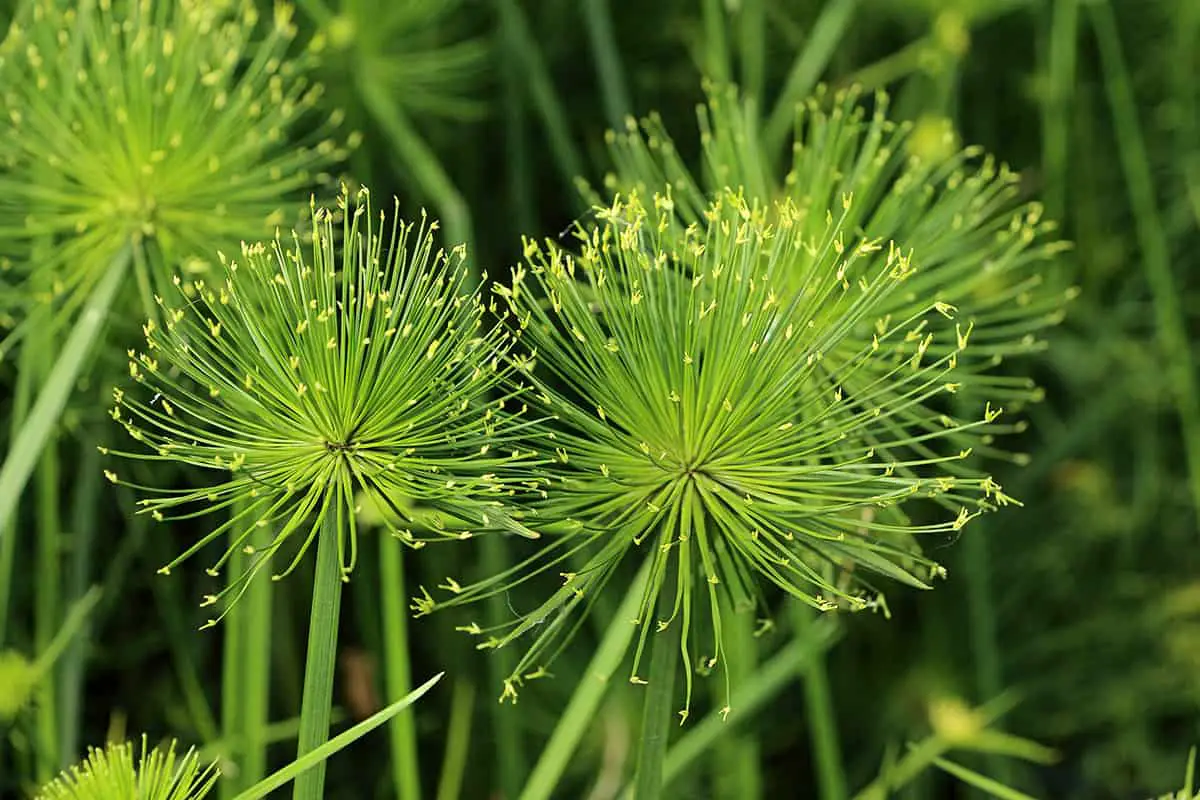
- Botanical name: Cyperus papyrus
- Common names: Papyrus, Nile Grass, Common Papyrus, Paper Reed
- Plant family: Cyperaceae
- USDA hardiness zone: 9 – 12
- Mature height: 5 to 12 feet
- Mature spread: Up to 5 feet
This is a perennial flowering plant that thrives in moist soils and can even be grown in standing water. It grows natively in Africa, and is cultivated in hot climates around the world as a perennial ornamental grass, or as an aquatic plant.
This is a dramatic-looking plant that holds clusters of slender green threads in explosions at the top of tall, stiff stems. The resulting look resembles a fireworks display and adds year-round interest to the garden.
This is a vigorous plant that can reach heights of 12 feet in ideal conditions, however outside of the natural habitat it typically tops out at around 6 feet.
Care
Light
Papyrus thrives in full sun, though it can also tolerate some partial shade.
Soil
Papyrus will grow well in any type of soil which is constantly wet. This can include clay, sand, or loam soils, as well as poor or fertile soils. Papyrus is also not fussy about the pH level of the soil.
The only quality that the soil needs to possess is that it is poor-draining. Well-draining soils will carry water away from the roots, while the roots of the Papyrus prefer to be held against moisture at all times. This makes the Papyrus an ideal choice for waterlogged soils where many other types of plants cannot survive.
Water
Papyrus has high water needs and should be grown in moist or wet soil. It can also be planted in standing water at a depth of up to 6 inches. It is ideally suited for planting alongside a pond, stream, or river since the soil here is naturally moister and you won’t have to stick to such a rigid watering schedule.
Temperature
Papyrus is a tropical plant that requires consistently warm temperatures to survive. It can be grown outdoors in USDA hardiness zones 9 to 12. It is very tolerant of exceptionally high levels of heat, even when grown in full sun.
Rose Mallow
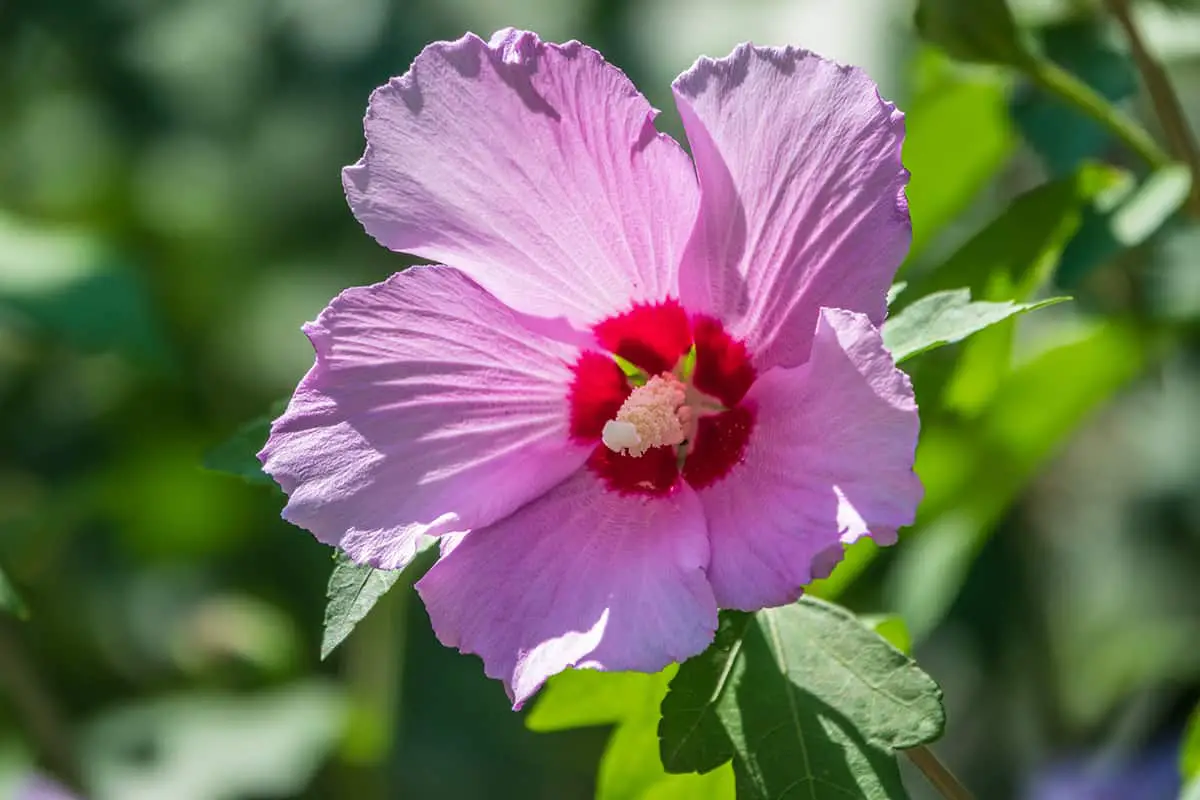
- Botanical name: Hibiscus moscheutos
- Common names: Rose Mallow, Swamp Hibiscus
- Plant family: Malvaceae
- USDA hardiness zone: 4 – 9
- Mature height: Up to 6 feet
- Mature spread: 2 to 3 feet
Rose Mallow is a perennial plant that is native to North America. It grows in its natural habitat in the wetlands from Texas in the US up to Ontario in Canada. It also goes by the name of Swamp Hibiscus, since it belongs to the hibiscus family and thrives in swamp conditions.
The flowers of this plant bloom freely for several weeks, from midsummer until the end of summer or the beginning of fall. They are very large in size, often measuring up to 10 inches across. Each individual flower lasts just 1 or 2 days, however, there are so many buds opening on a daily basis through the flowering period that the plant appears to be in constant bloom. The flowers come in a variety of colors, ranging from shades of yellow to white, red, and pink.
Care
Light
Rose Mallow should be grown in full sun for the best results. It can tolerate partial shade, but the flowering ability will be reduced in these conditions. When Rose Mallow is kept in shade it also becomes more prone to disease. To ward off disease and benefit from prolific flowering, position it in full sun.
Soil
Rose Mallow thrives in soils that are consistently moist or wet, and this can include clay or loamy soils. The plant is not fussy about soil pH, and the soil does not need to be well draining since the plant can grow well in waterlogged conditions.
Water
This plant has high moisture needs since it is accustomed to growing in wetlands. It should be grown in soil that is not allowed to dry out, and this may mean daily supplementary watering during dry summers. Root rot is not an issue for this plant, however, it can suffer in dry conditions, so too much water will be better than a lack of water for Rose Mallow.
Temperature
Rose Mallow is cold hardy down to USDA hardiness zone 4. It is tolerant of high levels of heat, however, it struggles in zones 10 or above.
Purple Loosestrife
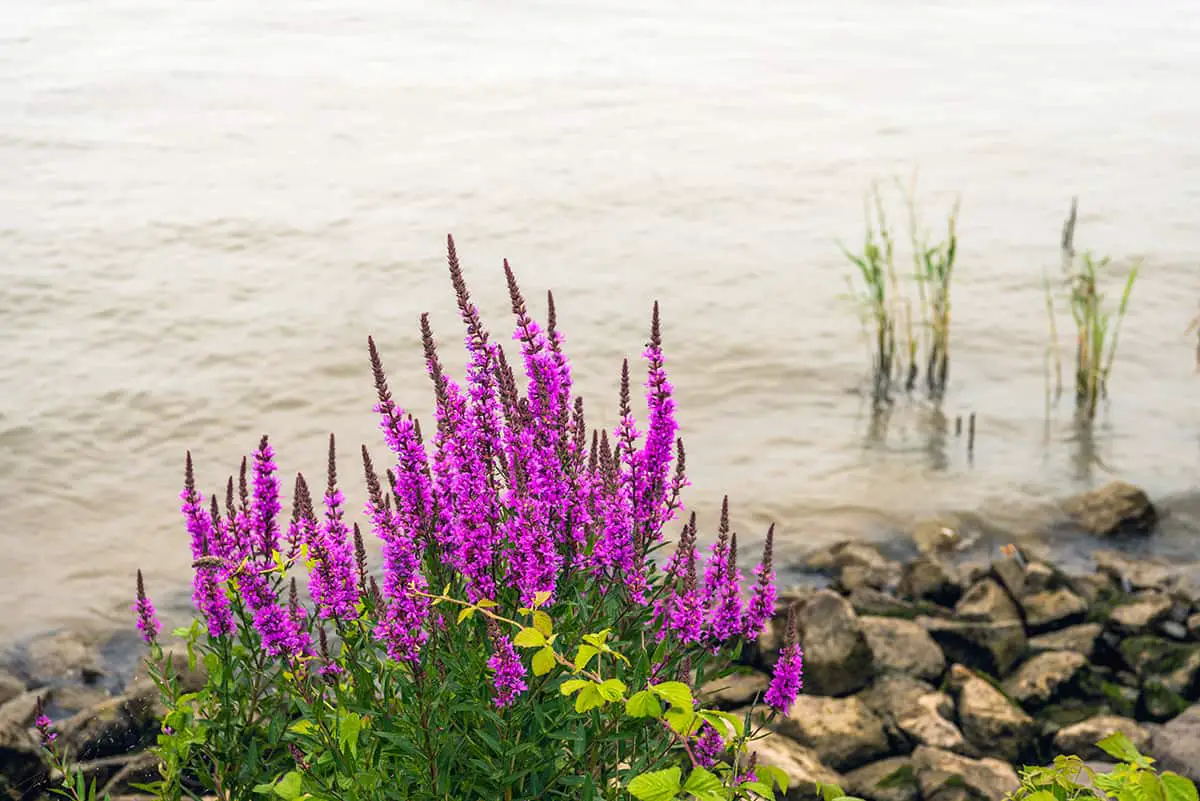
- Botanical name: Lythrum salicaria
- Common names: Purple Loosestrife, Spiked Loosestrife, Purple Lythrum
- Plant family: Lythraceae
- USDA hardiness zone: 4 – 9
- Mature height: 2 to 4 feet
- Mature spread: 2 to 3 feet
This perennial flowering plant is native to Europe and Asia and is able to bloom from spring right through to fall. Its natural habitat is wetlands, swamps, and alongside lakes, and therefore it thrives in moist conditions. The flowers of this plant are purple and pink, and they are held on tall spikes above lance-shaped leaves.
Care
Light
Purple Loosestrife thrives in full sun but can also tolerate partial shade.
Soil
The soil around a Purple Loosestrife plant should be average, and consistently moist or wet. It does not need to drain well, and clay or loam soils are ideal.
Water
This plant has high water needs since it is accustomed to growing in wetlands. Plant it beside a stream or pond, and ensure the soil is not allowed to dry out.
Temperature
This is a cold hardy plant suitable for growing in USDA hardiness zones 4 to 9.
